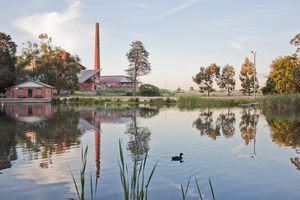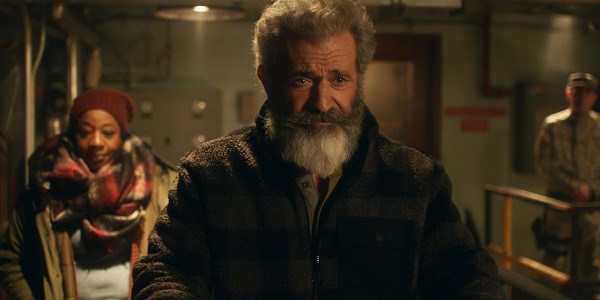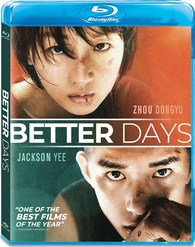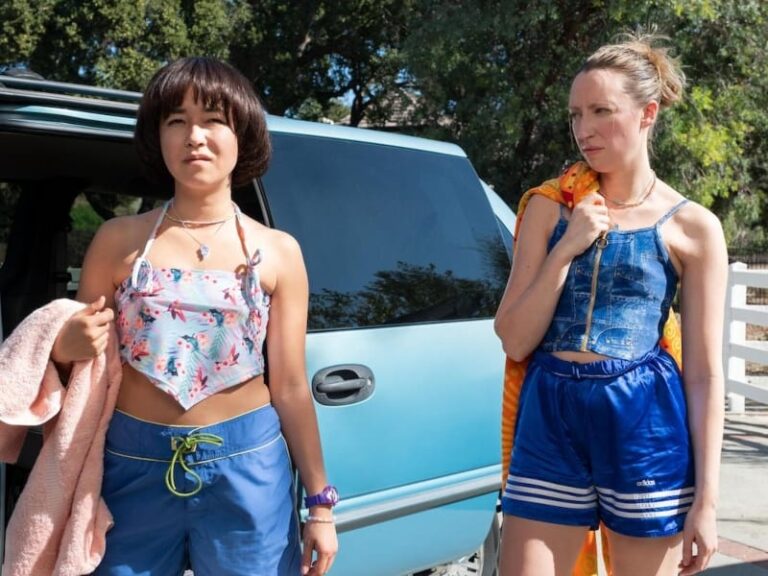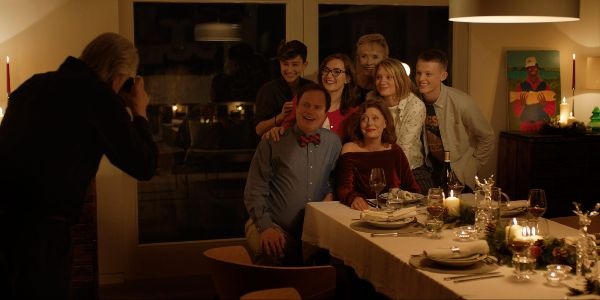Adam Wingard on Shooting ‘Godzilla vs. Kong’ as an Immersive 800 MPH Brawl
Check the Gate is a column where we go one-on-one with directors in an effort to uncover the reasoning behind their creative decisions. Why that subject? Why that shot? In this edition, we chat with Adam Wingard and discuss how you shoot a title match as epic as Godzilla vs. Kong.
There can be only one…perfect monster. In anticipation of Godzilla vs. Kong, it’s a debate we’ve been having around the FSR offices for the last several weeks. We’ve taken the conversation to you, the loyal reader, with our Bigger Than a Barn monster bracket. Everybody has their favorites, and it’s fun to root for the underdog (go get ’em, Gamera!), but it’s also obvious that our society has dubbed Godzilla and Kong the top two contenders.
These two titans started it all. King Kong originally stomped into theaters in 1933, but it was the financially stunning 1952 re-release that inspired Godzilla producer Tomoyuki Tanaka to plunge into the monster business. Born from atomic terror, the titular lizard kaiju seized the public’s attention, and sequels flooded the market. However, it only took two films before the franchise brought the icons together with King Kong vs. Godzilla in 1962.
That title bout is an absolute blast once the two rubber suits start smashing on each other, but there are also far too many sequences involving droning, dull humans. A flaw director Adam Wingard most definitely did not want to replicate once he became the referee stuck between the raging brawlers. His Godzilla vs. Kong is a breakneck contest of champions. Coming in at one-hundred-and-thirteen minutes, the latest (and possibly last) MonsterVerse entry supplies only the bare minimum when it comes to people. No disrespect toward Millie Bobby Brown, Alexander Skarsgård, or Rebecca Hall, but Godzilla and Kong are the stars. No puny human can, or should, take their spotlight.
When considering our One Perfect Monster bracket, Wingard has nothing but admiration for the competitors below Godzilla and Kong. The Rancor is cool, no doubt. Who would deny The Blob’s repulsive might? Every Ray Harryhausen creation demands deference and awe.
“If you asked me when I was a kid,” says Wingard, “Stay Puft Marshmallow Man would probably have been really far up on that list. But I don’t know. There’s something about the idea of Godzilla vs. Kong that has always felt like the ultimate endgame for monsters. Maybe it’s the simplicity of the fact that Godzilla represents the East and Kong somehow represents the West. It feels somehow like the Democrats versus the Republicans. The red versus the blue. There’s just something immediate about that.”
Godzilla vs. Kong taps into our primate nature. The desperate clash for survival rests in us all, and selecting a champion speaks to our belief. We want to come out on top. We want dominion on this planet. We have to pick our colossus carefully.
“Maybe it’s because Kong is so very human-like,” he continues. “He’s got opposable thumbs. There’s something about us like him. Godzilla represents more of a cold, reptilian thing. They’re polar opposites — warm-blooded, cold-blooded. And as the director, honestly, that’s what made it so fun to direct them. Their fighting styles are so drastically different.”
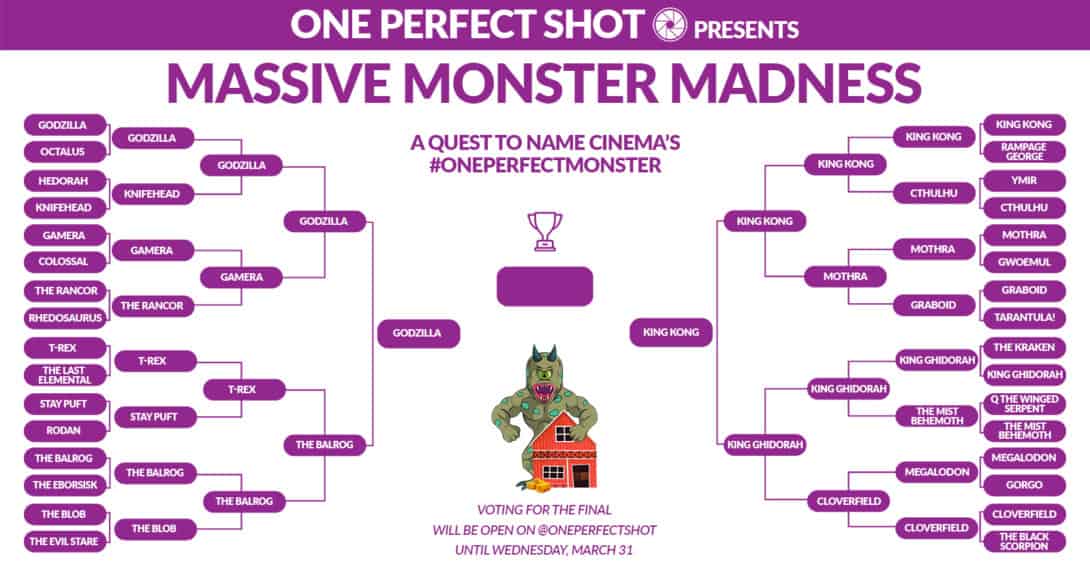
Click to Enlarge
When you look at the Godzilla franchise as a whole, the character frequently swings from bad to good to bad again. Within the MonsterVerse, Godzilla has mostly been used as a good guy or as a global defender protecting humanity from eradication. With Kong in play, the decision was made to place Godzilla back into a more antagonistic role.
“I always saw Godzilla as the heel of the movie,” says Wingard. “He’s Undertaker, and Kong is Mankind Mick Foley. Whenever you have that sort of opposition, the heel has to be more mysterious. He’s blowing stuff up, and there are obviously characters trying to figure out why that is. But at the end of the day, that creates this protagonist kind of thing with Kong.”
In Godzilla vs. Kong, Godzilla takes the backseat to Kong. We spend most of our time with the Skull Island citizen. The ape’s command over screentime doesn’t hint at Wingard’s preference. It’s merely a story necessity.
“Kong is also the underdog,” he says. “He’s at a severe disadvantage in terms of this fight. Nobody wants to watch Rocky and have it be about Apollo Creed because he’s already ahead. What even is that movie? It’s just [Apollo] relaxing, having fun, being confident. Then he fights this guy at the end of the movie, and he’s kind of surprised that the guy’s pretty good? You want to follow the character that has the most to prove and has the most odds stacked against them.”
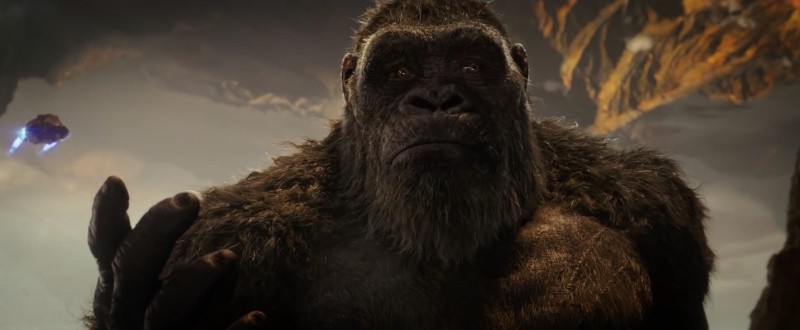
Kong is the heart of the movie. He’s the emotional character. With a hero in place, Godzilla is free to rampage. Our cities have never been so fragile, nor the devastation so eagerly pornographic. Godzilla turns a rage we never knew he had against us. It’s a nightmare to behold.
“I wanted to really get you right in there,” says Wingard. “I think this is the first film in these Godzilla movies where we have a lot of POVs from the monsters as well. Even though you’re trying to be dynamic as possible, you want to try to ground the camera work. But we do some things that are just totally impossible for cameras to do. If you put a speedometer to it, the camera’s moving eight-hundred miles per hour for some of these shots. We tried to think, ‘If you were actually filming this, there would be a helicopter over there and we’d attach a camera to Godzilla’s fins.’”
Wingard’s mission was to make Godzilla vs. Kong as immersive as possible without betraying the viewer’s brain. Too often, the director has felt a film lose itself when the digital cinematography takes over. Even the best films, especially during CGI’s early days, fumble their reality during these particular and peculiar transitions.
“I love Peter Jackson,” he says. “I love The Lord of the Rings and all that stuff. But the one thing that always irked me when I saw those films was like, ‘Okay, we’re going to cut to a castle or something like that. And the camera’s going to zoom all around it.’ Well, why is the camera, all of a sudden, spinning around this stuff? It’s not doing that around the normal characters and everything. I always try to be conscious about that, even though that’s not a great example, because that’s a great movie, but it’s where the origin of my thought process kicked into gear.”
Wingard marathoned the Godzilla franchise before stepping behind the camera. He picked his favorite battles and his favorite arenas. When Godzilla and Kong finally put the “vs.” between them, the climactic rumble must stand apart from everything previously conceived. A challenge Wingard delighted in conceptualizing.
“I wanted to see Godzilla and King Kong in environments that I hadn’t seen them in before,” says Wingard. “I have a natural inclination toward colorful tones. I wanted to know what neon would look like reflecting off Godzilla’s scales and off Kong’s fur. These characters have been in so many movies. We’ve seen them do so many things in different environments, but we hadn’t really seen them like this before. And obviously, when you’re making a Godzilla film, you have to have a big city fight. You got to go there.”
With Hong Kong serving as the ring, Godzilla and Kong go the full twelve rounds. As they tear through skyscrapers and pound their weight upon each other, it’s easy to see the child who became the man puppeteering this calamity. Godzilla vs. Kong is Wingard’s shot at fulfilling a lifetime’s worth of fantasy. He doesn’t want to fail anyone in the crowd, including himself, but most importantly, he wants to land a K.O. for the playground posse.
“I wanted it to feel heightened,” he says. “When kids watch this film, I want them to imagine these as being big toys in a really cool-looking city and they’re playing with them.”
Does Wingard prefer one titan over the other? He still won’t say. He made Godzilla vs. Kong his answer. All he knows is that the One Perfect Monster is not Stay Puft Marshmellow Man. Godzilla and Kong would pass his roasted corpse between each other as they enjoyed a timeout during their mythic battle.
Godzilla vs. Kong smashes into select theaters and onto HBO Max on March 31st.
